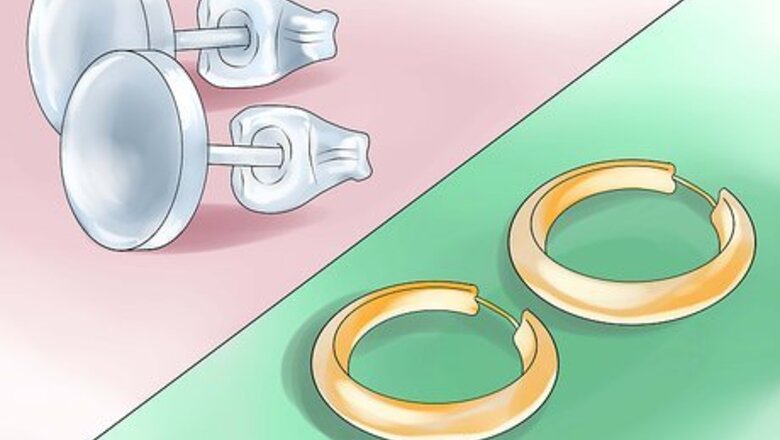
views
Basic Care Instructions
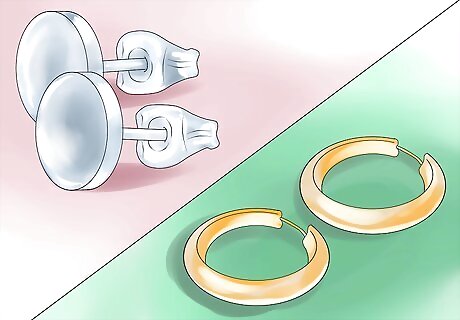
Only wear 14-carat gold or surgical-grade stainless steel earrings. Did you know that you can have an allergic reaction to certain types of metal piercings? Earrings made from copper, nickel, and white gold commonly cause allergic reactions and infections in wearers. So long as you got your ears pierced at a reputable location, you were probably given a set of gold or stainless steel earrings. However, when you are able to remove your first pair and swap them out for others, be sure only to purchase and wear high quality metal earrings that won’t irritate your skin.
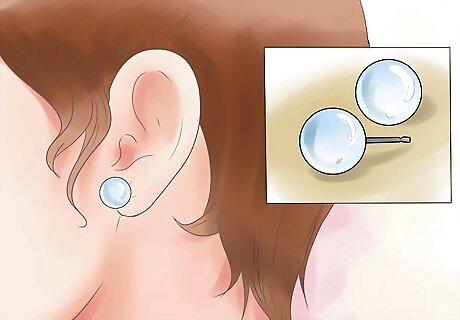
Wear post earrings for the first few months after your piercing, and gradually transition into other styles of earrings. While your piercing is still in the healing process, it is important to wear only post style earrings - earrings with a short metal needle and a ‘butterfly’ back to keep them in place. This style of earring is easiest to keep in your ear and doesn’t contain any heavy beading or decorative details. After 6-months of post earrings, you can begin wearing other styles such as the fish-hook or the clasp style earring back.
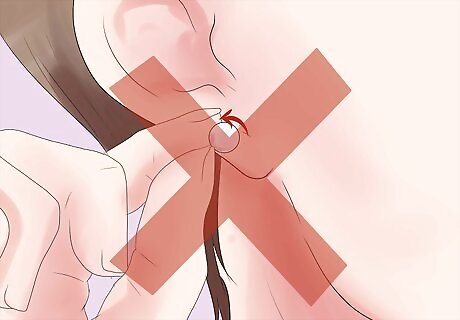
Don’t spin your earrings. Although there is some debate as to whether spinning your earring is beneficial or detrimental, doctors tend to lean towards the latter. Spinning your earring was done in the past to prevent the piercing from healing around it, therefore making it ‘stuck’. However, the earring is what prevents the skin from healing over, therefore making it very unlikely that your earring will somehow become grafted into your skin. Further, spinning the earring can irritate the skin, possibly causing infection. In general, avoid moving your earrings around too much.
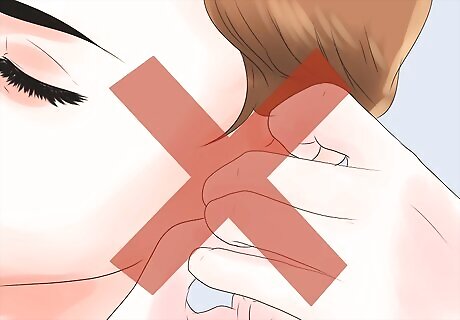
Don’t remove your earrings for the first 6-weeks after your piercing. For the same reason that you shouldn’t spin your earrings after being pierced, you shouldn’t remove your earrings either. Taking your earring out exposes the piercing to possible infection, and increases the likelihood that the piercing will heal over, preventing you from re-inserting the earring later on. As a result, you need to wait until your ear has completely healed and become accustomed to having the earring in all the time. You may be able to remove your posts early if your ear healed quickly, but you’ll need to speak to your piercing specialist to confirm this.
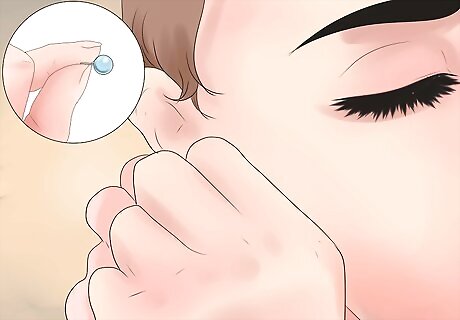
Remove your earrings nightly after 6-weeks of healing, post-piercing. When your piercing has healed completed (after about 6-weeks, as aforementioned), you’ll want to take out your earrings every night before bed. This opens up the piercing to air circulation, which is important for preventing infection. Replace your earrings every morning though, so that the piercing does not heal over.
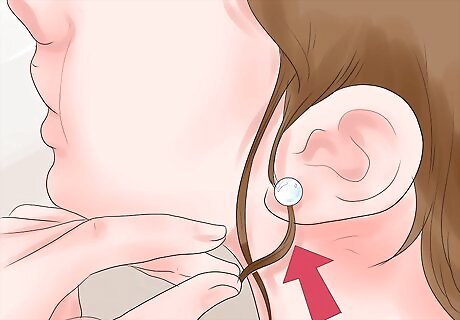
Be careful not to get things caught on your earrings. Getting earrings caught on things can be easy to do, especially during the weeks after getting a new ear piercing. Clothing, hair, scarves, and hats are the primary culprits, although anything near your face or head could potentially get caught. Always put on and remove articles of clothing slowly, and avoid pulling long hair away from your face very quickly. Getting something caught on your earring could possibly rip it out, causing not only significant pain but also a ruined piercing.
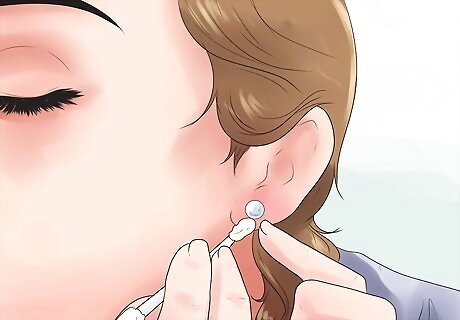
Clean your piercing regularly for the first few weeks. Cleaning your piercing on a regular basis will help stimulate healing and prevent an infection. As a result, you should use a saline solution on your ears every day, and clean your piercing with soap as needed (once a day at most) for the 4-6 week healing period. After your piercing is totally healed, you can stop doing the saline solutions altogether, and clean with soap only when you experience symptoms of an infection or irritation.
Cleaning Properly
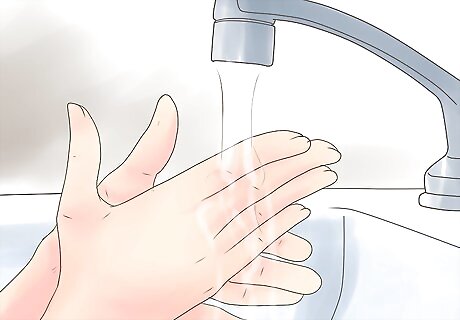
Wash your hands with antibacterial soap. Washing your hands properly prior to cleaning your piercing is important, so that you don’t infect the piercing. Use warm water and an antibacterial soap for sensitive skin; choose one without a scent when possible, as perfumes may irritate your piercing. Scrub your hands for 30-45 seconds before drying them off with a clean cloth.
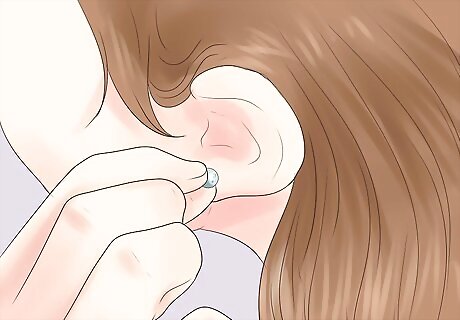
Don’t remove your earring. It is recommended that for the duration of the healing process (4-6 weeks on average) that your earrings not be removed at any point in time. Taking out your earring before the piercing has healed can irritate the skin and possibly cause infection, not to mention your piercing could heal over and prevent the earring from being re-inserted. Therefore, when you clean your ears, don’t take out the piercings (no matter how tempting!). The metal of your earrings won’t rust or become damaged from the water or cleaning solution you use.
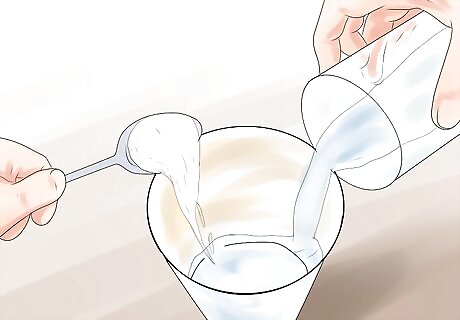
Prepare a saline solution. It is recommended that you soak your piercing in a saline solution on a daily basis for the first 2-3 weeks to help prevent infection. The saline solution does a number of things, including preventing infection by increasing circulation and preventing bumps or pockets from forming around the piercing. Use non-iodized fine-grain sea salt and distilled water, as other types of salt contain ingredients that could irritate your ears. Mix ¼-teaspoon of the salt with 8-oz (1 cup) of warm water, and pour into a shot glass or small bowl. The ideal water temperature for the solution is drinking temperature for a warm drink - around 120 to 130 °F (49 to 54 °C).
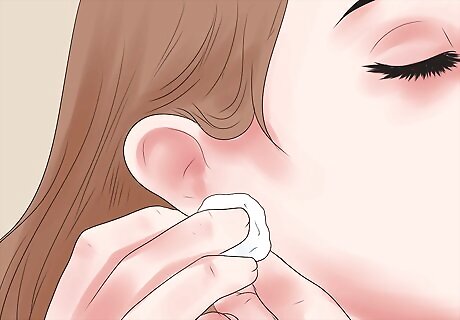
Rinse your piercing with the saline solution. Hold your ear in this solution for 2-3 minutes, and then rinse with clean distilled water afterwards. Doing this on a daily basis for 2-3 weeks is often enough to clean your ears and stimulate healing. Be sure to rinse the solution off your ear, or else the salt will re-crystallize and cause irritation afterwards. If your piercing is on your cartilage, it may be easier to soak a bit of gauze in the saline solution and hold it to the piercing, that to dip your ear into a cup of the solution.
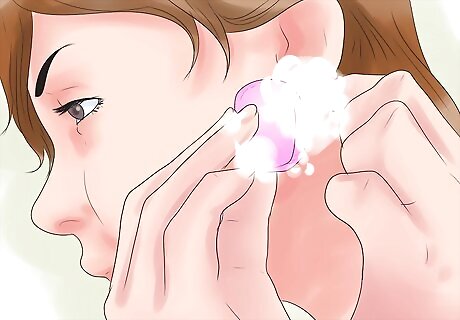
Clean your piercing with soap. If you’re concerned about infection, you can use soap to rinse your ear in addition to the saline solution. Use a mild anti-bacterial soap and warm water to gently rub around your piercing, doing so for no longer than 30-seconds. Rinse off your ear with more clean water, and then pat the piercing dry with a clean cloth or tissue. Don’t clean your piercing with hydrogen peroxide, witch hazel, or alcohol, as these are too drying and may irritate the skin around your piercing.
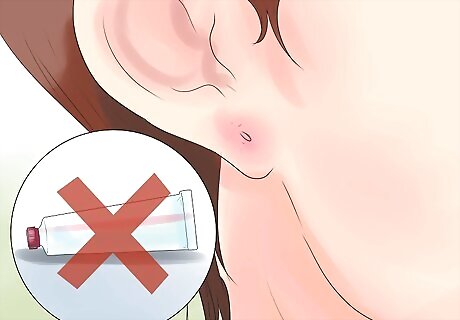
Don’t apply ointment or cream to the piercing. It might be tempting to put on an anti-bacterial ointment, but this could actually cause an infection. Ointment and thick creams seal over the piercing hole, preventing airflow and slowing the healing time as a result. Further, they trap dust, germs, and other airborne particles which can cause an infection. It is unnecessary to apply anything to your ears after your clean them, unless your doctor tells you otherwise.
Preventing Infection
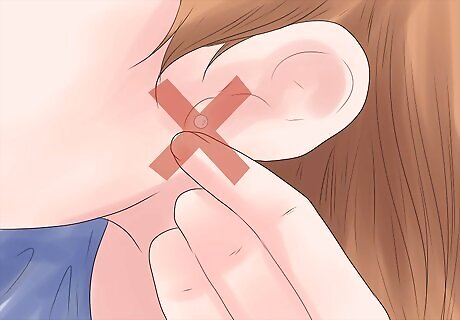
Don’t touch your piercing unless absolutely necessary. If you’re not spinning your earring or removing them (both of which you should avoid for the 6 weeks post-piercing), then there should rarely be another time you should touch them. Touching your piercing introduces bacteria that could cause an infection. Therefore, don’t play with your earrings or touch your piercing unless you’re cleaning it or swapping out your earrings.
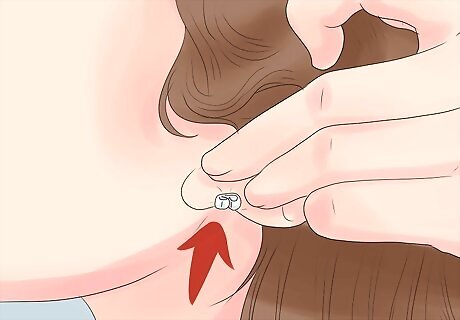
Avoid putting the earring ‘butterfly’ on too tight. On post earrings, the butterfly is the backing that secures the earring in place. However, putting this too tight on your ear cuts off circulation and airflow to the piercing, causing pain and possibly infection. Most post earrings have a small notch on the needle-part that shows where the butterfly should stop. In general, only push the butterfly onto the post so far as to only barely touch the back of your ear, but not to pinch it.
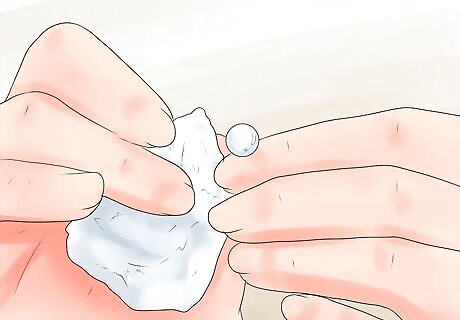
Clean your earrings when they’re out of your ear. Even if you’re using 14-carat gold or stainless steel earrings, the metal can still become contaminated with germs that might cause infection. Therefore, whenever you put in a new pair of earrings or take yours out for a bit, you should clean them to kill possible germs. Swab them down with rubbing alcohol or hydrogen peroxide and allow them to dry. Don’t do this while they’re in your ears though, as they peroxide and alcohol will dry out the skin in your ears and possibly cause an irritation.
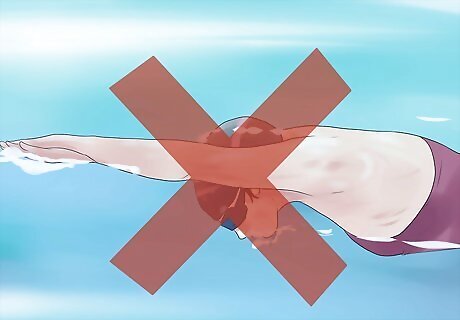
Don’t submerge your piercing in water or go swimming until it is fully healed. If your piercing is new, then it is still very sensitive and can become infected from exposure to the bacteria in water. Showering is fine, but taking a soak in a hot tub or going swimming in any pool, lake, river, or sea is out of the question. These bodies of water contain harmful bacteria and chemicals that are likely to infect your ear. Wait 3-6 months after a new piercing before attempting swimming or submerging your head in water, to significantly limit the possibility of infection.
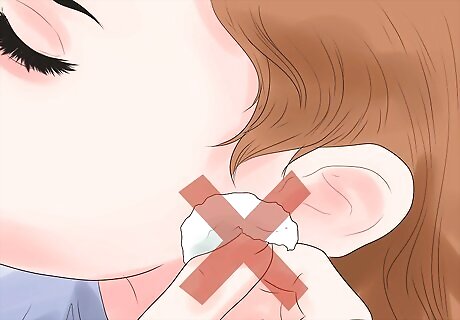
Avoid cleaning your piercing too often. Although it may sound counterintuitive, cleaning your piercing too often may cause infection. That is because over-cleaning dries out the skin and causes an irritation, which over time may become raw and exposed to bacteria and grime that cause infection. You should clean your piercing once a day until it is healed, but doing so more than once a day can have unwanted repercussions.
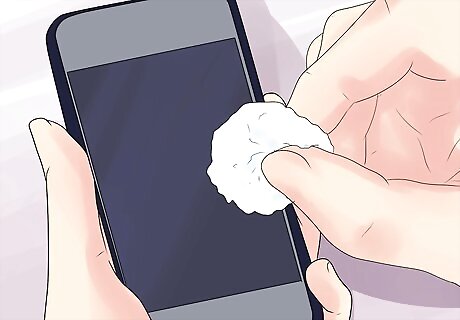
Disinfect objects you hold next to your ear. Cell phones and headphones being the primary culprits, things that you put near your ears often contain bacteria that can cause infection. Clean these items with antibacterial soap or rubbing alcohol once a week, to reduce the risk of possible infection.
Recognizing and Treating Infection
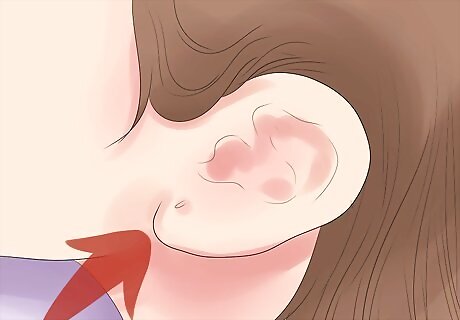
Determine if your piercing is infected. While some minor swelling, redness, and tenderness is normal for the first 3-6 days after a piercing, extended pain and swelling may be a sign of an infection. If you’re worried your piercing is infected, check for these symptoms: Pain and swelling that extends beyond the hole Bleeding Yellow discharge or a crust around the hole The earring becomes stuck in your ear A fever above 100-degrees Fahrenheit
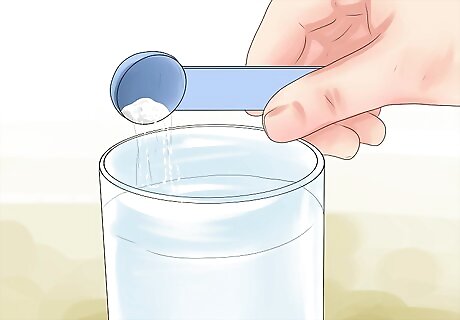
Use a saline solution to treat the infection. Most piercing infections are easily treated and don’t progress to anything harmful, so long as they aren’t left to run their course. To treat an infection, use the same saline solution as you would to clean your ear shortly after getting it pierced. Mix a solution of ¼-teaspoon non-iodized sea salt with 8-ounces (1 cup) of warm water. Pour this mixture into a small bowl or shot glass and soak your ear in it for 3-5 minutes. If using a cup is too difficult, soak sterile gauze in the solution and hold it to the infection for 3-5 minutes. Repeat this up to two times a day until the infection has cleared.
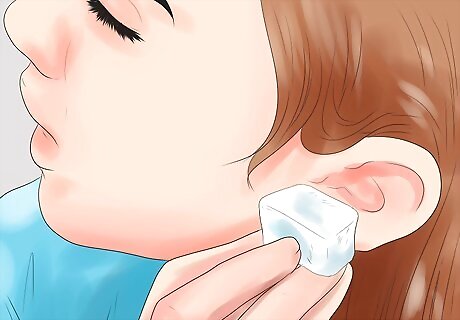
Use ice to reduce pain and swelling. Although holding ice to your infected piercing won’t reduce the infection, it will reduce the swelling and numb some of the pain. Hold an ice cube to your piercing for 5-10 minutes until the swelling has gone down. You can do this daily 2-3 times, or whenever you notice swelling.
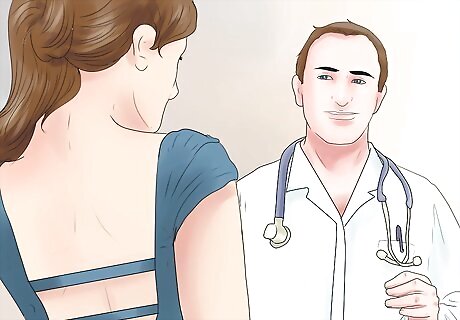
Make an appointment with your doctor of the infection does not subside. If you’re dealing with a particularly tough infection that does not go away after 2-3 days of treatment, you may need to visit your doctor for a prescription antibiotic. If your earring is stuck in your infected ear or if it won’t stop bleeding, you should also make an appointment with your doctor.


















Comments
0 comment